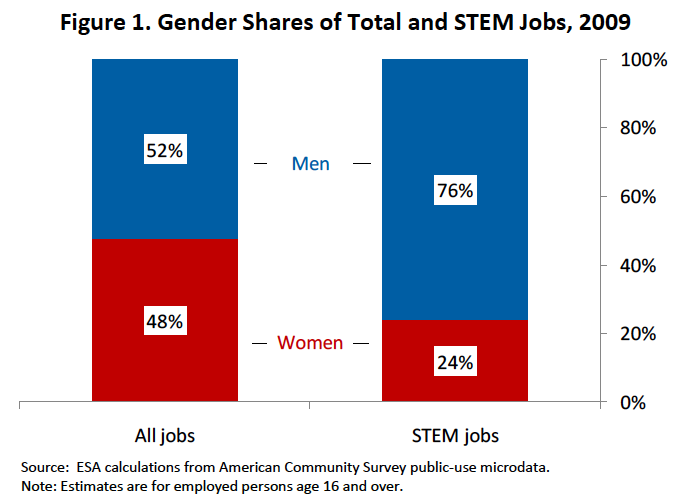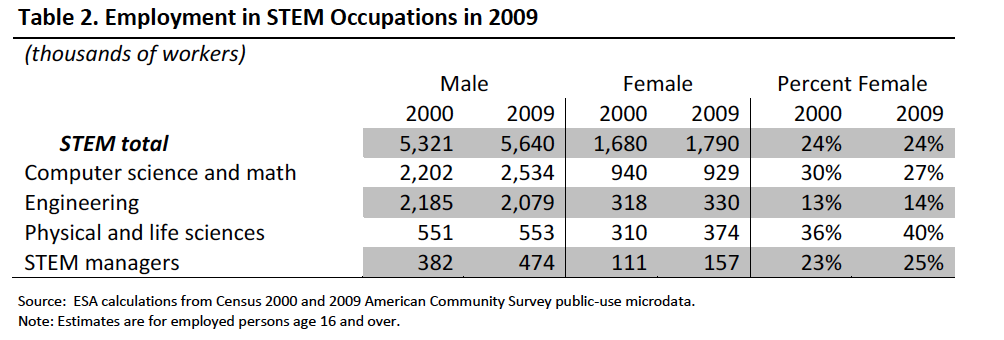The Status of Women in STEM
The STEM fields – science, technology, engineering, and mathematics – have long been plagued by the underrepresentation of women. Men tend to dominate in the tech industry, and the numbers of women simply aren’t growing the way one would hope. Although women make up approximately half of the United States workforce, research from the US Department of commerce indicates that they accounted for just 24 percent of STEM professionals in 2009. Another report, from 2011, found only one in seven engineers is female. In fact, women have seen no employment growth in STEM jobs since 2000.
Despite a somewhat encouraging spike in students (both male and female) pursuing STEM majors in college, female students also still make up a minority in most fields. In fact, gender distributions across almost all science and engineering degrees have remained essentially unchanged since 2009:
Notably, women do earn the majority of bachelor’s degrees in several key areas, including Biology and the Social Sciences, but have remained fairly stagnant in many disciplines, and actually taken a step backward in others, most notably computer science. This is particularly troubling, as it is the fastest growing of the STEM professions; the field is expected to make up 71% of new STEM jobs by 2018. According to a recent article in the New York Times, women received 29.6 percent of computer science B.A.’s in 1991, compared with 18.2 percent in 2010. Today, women hold only 27 percent of all computer science jobs.
Why the Disparity?
The troubling disparity has been attributed to a number of factors, including failures by elementary and high schools to spark girls’ interests in math and science. In colleges, the reasons for high attrition rates of women from STEM majors often cite insufficient support, and a lack of female role models. One study found that women who took classes from female professors not only performed better, but were also were more likely to take future math and science courses and to graduate with a STEM degree. The recent success of Harvey Mudd College – which boosted the percentage of computer science degrees awarded to women from 10% in 2006 to 45% today – has credited efforts to shift course content to practical applications, and to change the perception of computer science as a “geeky guy thing,” a perception that plagues other STEM fields as well.
How to Learn More about STEM
For young women in high school who are interested in pursuing, or even just exploring, the STEM fields, there are several exciting opportunities to take advantage of. The MIT Women’s Technology Program (WTP) is an excellent program in which female high school students explore engineering through classes, labs, and other projects in the summer after 11th grade. Additionally, Girls Who Code provides eight-week boot camps that teach middle and high school girls programming skills, Web design, robotics, and mobile app development. The University of Michigan and U Penn also offer pre-college programs specifically designed for girls interested in STEM fields. Michigan offers the WISE Program (Women in Science and Engineering) and Penn offers GEMS (Girls in Engineering, Math and Science).
As always, for further guidance and information, please contact us at www.collegiategateway.com.



